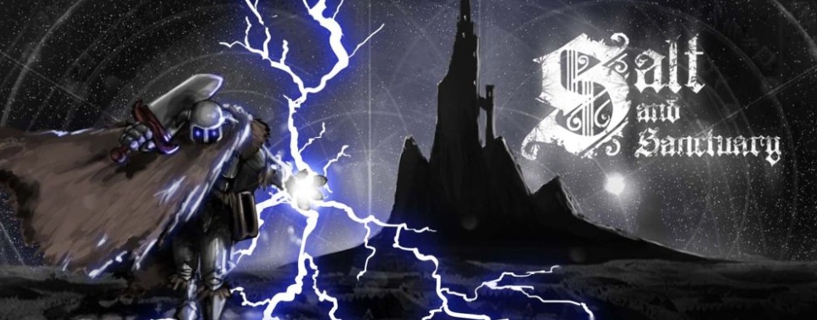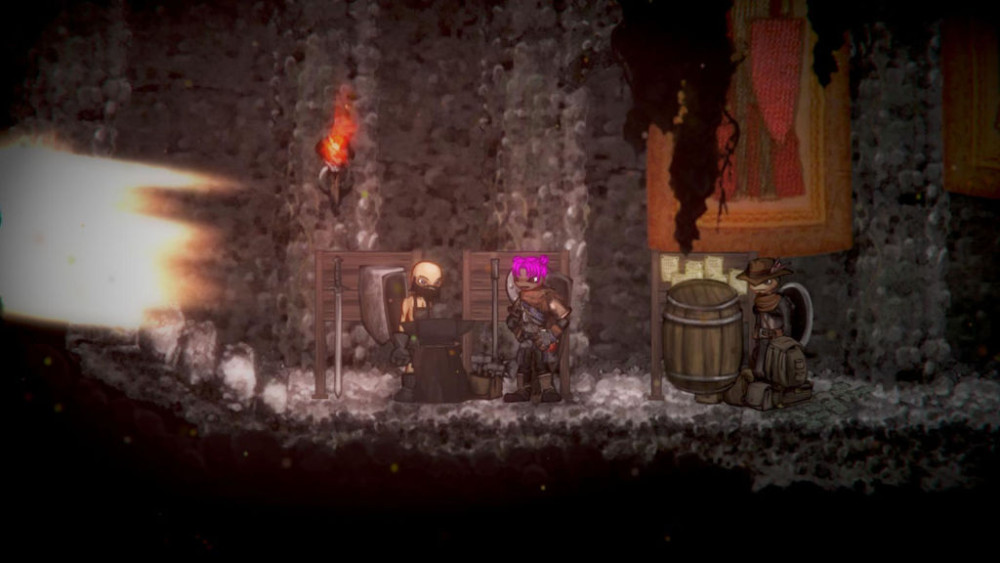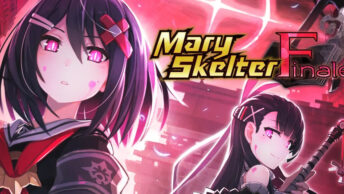A newfound meaning for adding Salt on Eggs.
Type: Single-player, Local Co-op, Local PVP
Genre: RPG, Action, Metroidvania
Developer: Ska Studios
Publisher: Ska Studios
Release date: 02 Aug, 2018


Would you like a pickle or a carrot?
Okay, I understand and completely agree with the eye-rolling situation when a game is supposedly like Dark Souls. If I read or hear about some game being the “Dark Souls of Farming Simulators” or something, I just sigh and skip the review entirely. However, in this case we have a game that has been soaking in a pickle jar of Dark Souls and is ready to eat. Yet, it is not Dark Souls. It is heavily formulated around the structure and framework, though. There is the way in which you collect Salt ( Souls ) which, if you die, stays with the enemy who defeats you until you beat them ( but if you die before you reach them the Salt is gone forever ), there are Red Flasks ( Estus Flasks ) that are replenished when using Sanctuaries for healing and respawns ( Bonfires ), the use of parrying or shields for an attack strategy, the manner in which the character builds are made, the equipment loadouts, the cryptic manner in which items drops are described, the use of charms or rings, the lack of any explanation of what is going on and how to do things, and I could go on for even longer but the sentence would be super long.
Now, there is a lot of platforming and exploring of levels by jumping and such, but that is not, I repeat, not where the game gets its mojo. It gets its mojo from the constant challenge of the combat on top of the platforming as you explore and the manner in which you must decide which way to tackle an opponent with only a second or two to make that judgement call. Platforming is used as a means to traverse, explore, find strategic advantages, and discover hidden goodies. There is very little nail-biting platforming like in say N++ or Super Meat Boy. The bosses, on the other hand, are not like Dark Souls. When I see the bosses in Salt and Sanctuary, it’s often a good 2D Platformer boss where I dodge, roll, and attack and platform a bit to get at them from a good attack point. So, when I say it has been soaked in a pickle jar of Dark Souls that is what I mean. You can pickle a carrot in the same pickle jar, but it doesn’t make it a pickle.
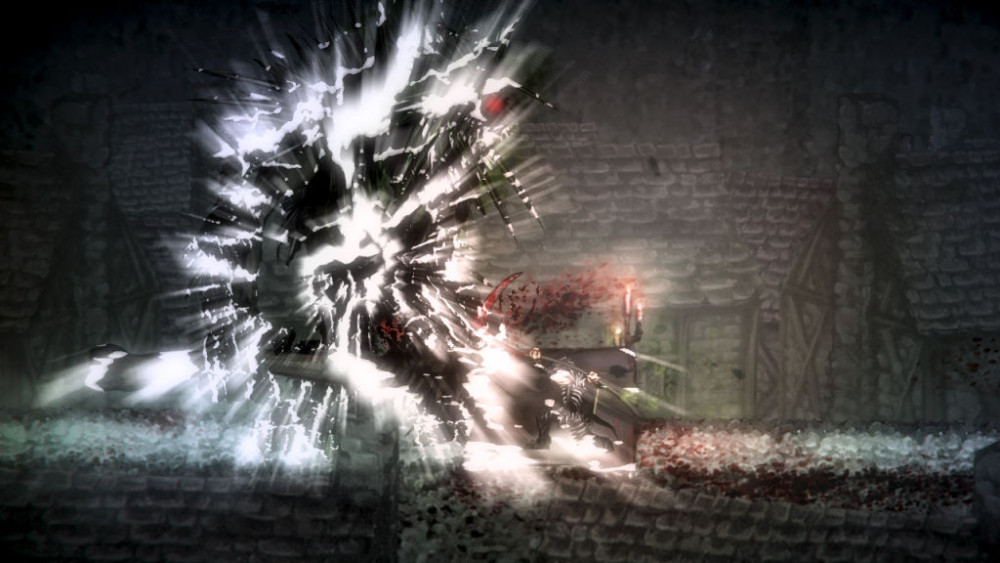
How it plays on the Switch
When it comes to the Switch version of the game, there are a few differences compared to the PS4 and PC versions. Firstly, I have to address the main issue I have with this version; using Joy-Cons. The controller L+R buttons are way too close to the ZL+ZR buttons. Normally, I don’t really notice this, but when playing Salt and Sanctuary on the Nintendo Switch you find that it’s very easy to accidentally use a red health flask ( Estus Flask ) when you want to do a dodge roll. It happens often, and there is no way to re-bind the buttons that I am aware of. I make note of this because it happens every single time I’ve played, and when I play co-op it happens to the person playing alongside me as well. It’s annoying and while I bet it works fine on a PS4 controller, the Joy-Cons are super sensitive with barely any distance between those buttons. So, keep in mind you may be wasting a few potions with each playthrough.
Another point I’d like to make is that in handheld mode, it’s incredibly hard to see traps. Salt and Sanctuary is literally dotted with hidden traps that are barely visible on a grey-toned background. It’s so hard to see in handheld mode, I literally gave up and have been playing it on my TV ever since. If you’ve got eagle eye vision, then go for it, but otherwise be aware that you have to stare very intently to see traps unless you know where they are in the first place.
Graphically, I’ve noticed in the docked mode that there are some frame drops now and then. It’s not a regular occurrence, but in places where several enemies swarm you the framerate stutters just a bit for a second or two. I’ve also seen this happen when there are a lot of particles flying around or co-op mode when someone dies while you are fighting off enemies. It’s not a game-breaking issue, but be aware you are not going to get a 100% smooth experience from beginning to end on the Switch.
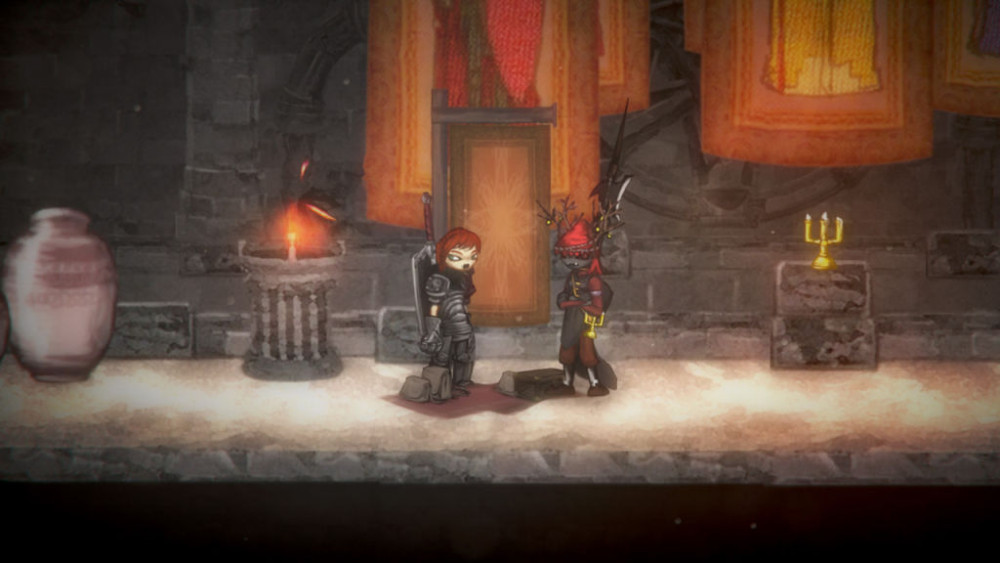
Gameplay
Salt and Sanctuary is a 2D Action Platformer RPG game where you start out with nothing and level up yourself through combat as you explore game levels. There is a constant reward system in place to search and discover hidden treasures or areas. So, for those that like to hack and slash through without caring about leveling or getting new weapons upgraded much, this is not a game that will fall in line with that. You have an enormous variety of options to tackle your build and upgrades, the choice is entirely yours to take. Be underleveled for the challenge or leveled up high for the easy kills, it is your call.
The core of the game follows it’s namesake as players center around collecting Salt, which is used to level up, in order to redeem it for stats at a Sanctuary, of which there are a limited number of per level. There is a grey bar at the bottom of the screen that turns white once you have enough to level up and that’s the heads up for you to get to a Sanctuary before you die. If you die before going to a Sanctuary, you will lose all your Salt to the enemy or it transforms into an otherworldly creature that must be defeated for you to regain it. Die before you get to your Salt and it’s gone forever. You’ll find that can be absolutely satisfying and frustrating all in within the span of one gameplay session. I think I nearly squeezed my Joy-Cons to death when I lost over 20,000 Salt the other day. For those looking for a procedurally generated aspect, there are no rogue-lite elements here. The enemies will respawn at their designated locations the second you use the Sanctuary altar. This also means every time you heal up, the enemies will be right there waiting for you again. The only exceptions are the knights, which are one time kills because they are a bit harder to put down.
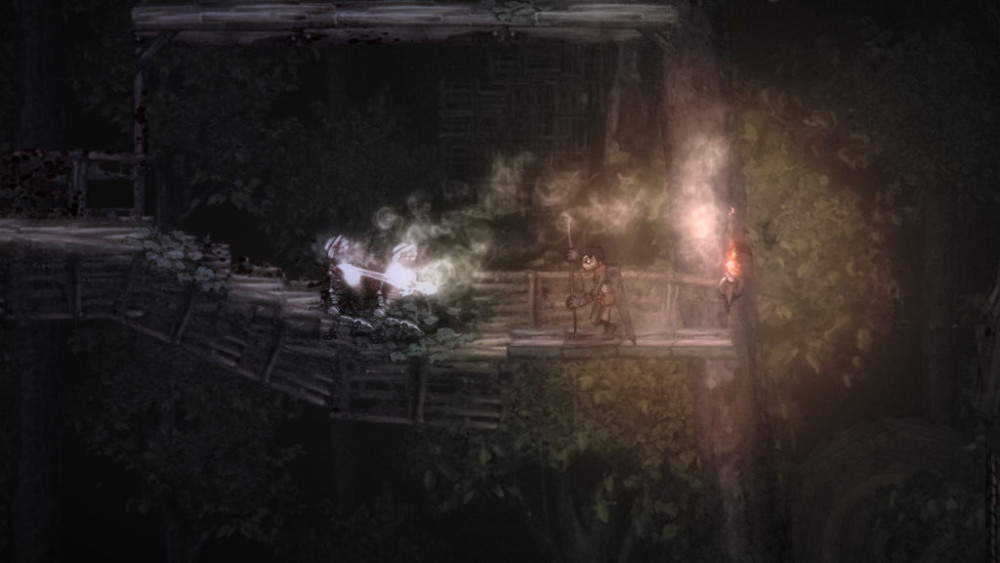
The map is interconnected, so you’ll be deep in the bowels of someplace and suddenly find yourself at a locked gate that can now be opened, giving you a way back to someplace you’ve been before. It’s absolutely satisfying to find these locations and be able to go back and forth at will, but it’s not the only way to do so. There are Stone Guide figurines you can use at Sanctuary alters, assuming they have the same Creed as you do, giving you the option to set up Guides that allow you to fast travel to other Sanctuaries within the map. It’s incredibly helpful because you sometimes need to use a Merchant at one Sanctuary or a Cleric from another in order to unlock or upgrade something. I would not say there is a ton of backtracking, but you don’t have to walk if you don’t want to. Also, there are Bells of Return you can purchase to instantly go back to the previous Sanctuary, something quite useful when you are in a tight spot and don’t want to lose a large cache of salt.
As for classes and creeds, you are honestly better off looking at a guide and that is a damned shame about this game because it’s almost mandatory to use an online guide to figure out what is going on. The game uses a sink or swim method of learning how to play, so you are thrown into the lake before you know what to do. While the basics like using stats, creeds, and weapons to plan out a build aren’t too hard to glean, the actual relevance of what stat overpowers what and what builds are more perilous is something you will have to look up. I highly suggest using the Salt and Sanctuary Wiki if you get confused. From my experience, playing as a Paladin and a Mage, I found both Strength and Magic to be very powerful compared to Dexterity. You could be there forever with a Dex build, but level up on Strength and you’re golden. Magic worked quite well for me too, but not as much as Strength. I do advise using an Amber Idol at the beginning when you make a character and then use it much later in the game.
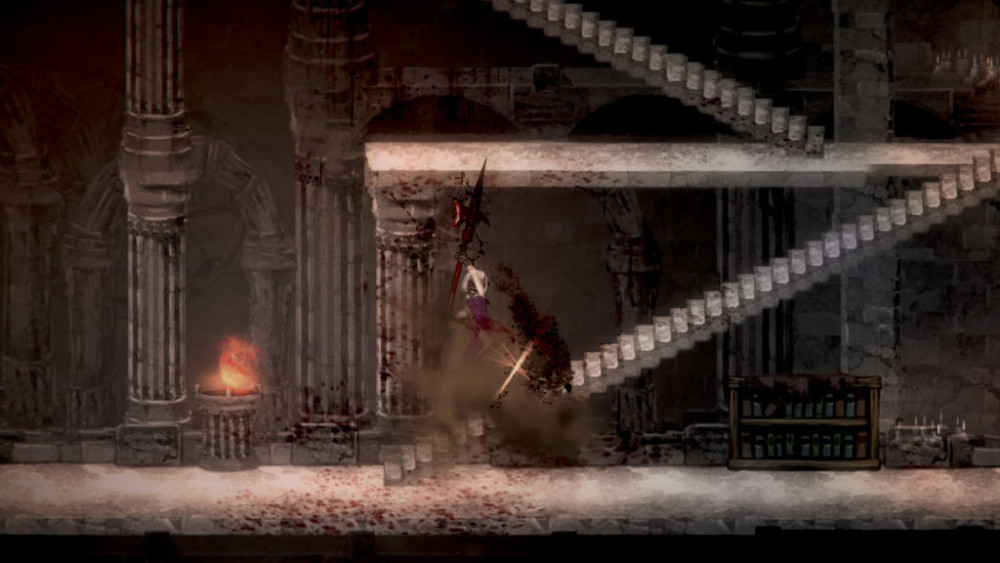
Picking a certain class has its benefits. Both Knights and Paladins can use heavy armor at the beginning of the game, Mages can use magic instantly, Thieves are a dexterity build with a shield, Hunters use a crossbow and whip at the same time, and Clerics can use prayers off the bat. The Pauper and Chefs seemed to have nothing to offer, but would be good for those who want to customize their build from the ground up.
One very nice feature of Salt and Sanctuary is the double loadout button. Here, you can set up two different loadouts to address combat very quickly on the fly. Do you need to use a bow and arrow? Click the L button and you got it, even ready with fire arrows. Prefer to switch to a GreatHammer for massive damage instead of Sword? Click the L button after setting up the load out. It’s brilliant and easy. There are only two loadouts, but it is more than enough to handle combat.
I also want to remark that you can play with various amounts or types of armor ( sound familiar? ). I generally preferred a half-naked approach but suited up before a strong enemy. Different armor and helmets have varying attributes and stats. For platforming areas, I often went in butt naked save for a bloody loincloth in order to jump faster and more easily. You can also fight bosses naked to roll really fast, but you’ll need to parry or use red flasks for health very often.
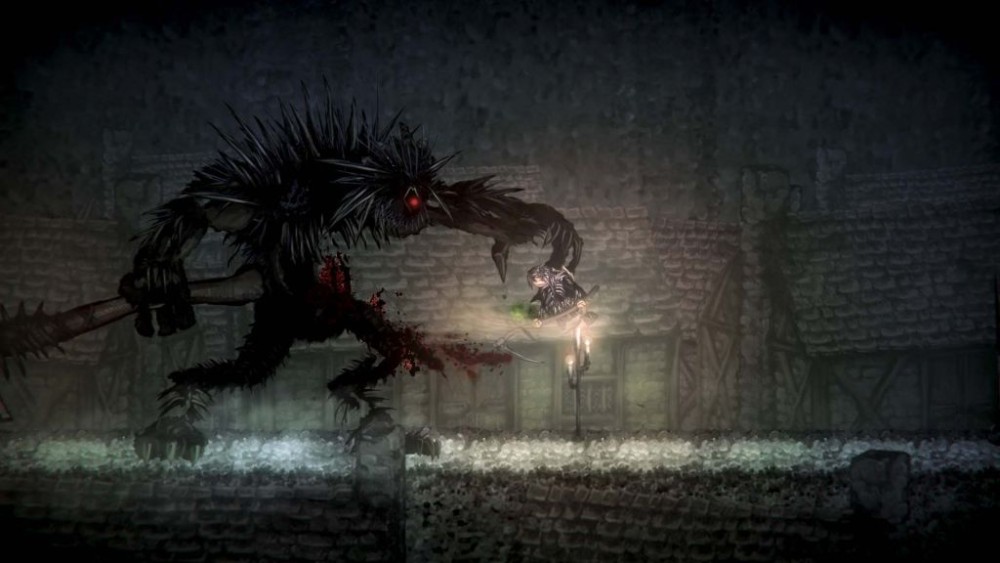
Co-op Gameplay
I have to be honest, co-op gaming is where it is the most fun. It’s local co-op only, though. So, you need a buddy to sit next to you and share the same game screen area. That said, you also share a bunch of other things. Salt is earned from anyone in the group, whether you are the main leveled up bad-ass or the weakest unleveled player. This really helps in leveling up your friend if they are just starting. I was a level 35 and helped someone level up from nothing to only 10 levels below me inside of an afternoon. It’s a bit easier to tackle bosses and if you die, that other player can retrieve you from a Sanctuary ( unless you are a Class 2 Cleric that can Revive a fallen player ).
Co-op play involves sharing a lot of things, and you get to keep all the shared items, finds, and level ups on each respective game save. However, the lead person on the co-op play is the only one who can designate a Sanctuary with a Creed. I’d suggest having the other person use a different creed so you have extra options when exploring the map. If your other player has terrible weapons, you can drop one of yours and they can pick it up to help them out.
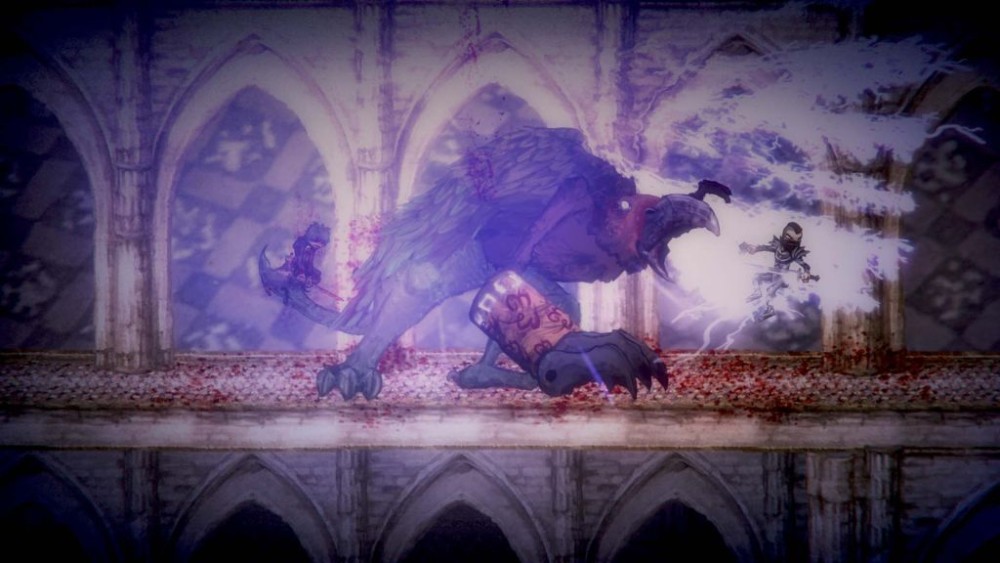
There is a sort of glitch that is helpful as well when someone falls down and we nicknamed it the “Transporter”. If your partner falls way down below the viewing area of the screen, they can hit the “+” button and then back out of it and then they magically appear back with you where you are standing. I used that glitch frequently, saving a ton of time from having to go back and rescue them.
Another fun part of co-op is being able to use an Egg, purchased from a Sellsword at a Sanctuary, to start a PVP match. It’s a fight to the death and you get to see who has the better stats to take advantage of. It’s great fun for about…maybe 10 minutes. Then, I prefer to just get back to the proper game instead. Other than PVP, the only other means of multi-player is by using a Jurney Bottle to send random messages to other people playing the game. It’s not too bad, but you either get a lot of nonsense messages or messages about hidden areas that you kinda wanted to discover for yourself.
Design/Sound
Graphically, the game oozes dread and sorrow, making Castle Black look like a bed and breakfast. The style of the artwork is distinctive and feels painstakingly colored and drawn without losing any feel or tone of the overall game atmosphere. It is as much a part of the game as is the combat and exploration. Enemies feel horrific and downright damnable without getting overly frightening, which is great for those who don’t want too scary of an experience. There is a subtle soft tone to the edges of all the enemies that is noticeable throughout. I did find the music to be somewhat overly sparse, but it was dark enough to get the feeling that this is a hard life to be won by killing for Salt. The usual guitar chord strumming theme sort of reminded me of the intro to the Vikings TV Show.
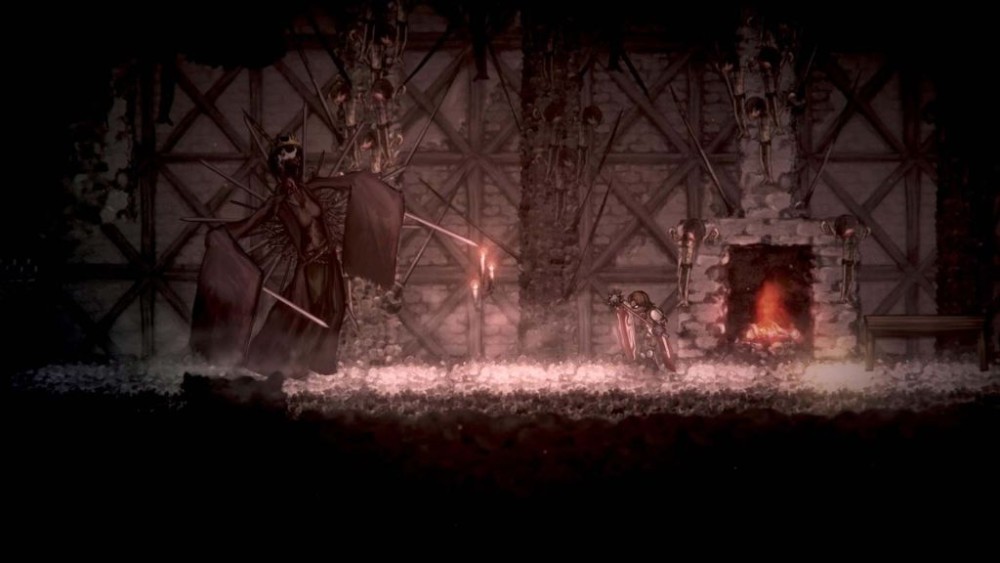
Verdict
Salt and Sanctuary is a very fun and addictive game to play. Don’t listen to folks who say it is too hard. It is a blast if you like exploring and discovering hidden areas and the combat can either be strategic with parries or simple hack n slash at times. I absolutely love leveling up and upgrading my weapons because each and every stat increase can make the game that much more intense. The platforming isn’t super difficult compared to pure platform games and while the game has some tough areas, it’s always fair and well thought out. If you’ve finished Breath of the Wild, then I seriously implore you to grab this game if you enjoyed the combat. It’s fun and exhilarating, something you’ll likely even play a few times just to have friends tag along. Currently, it’s available on the Nintendo Switch eShop with a physical Drowned Tome Edition coming out in October 2018 that includes a double-sided map poster and the soundtrack.

